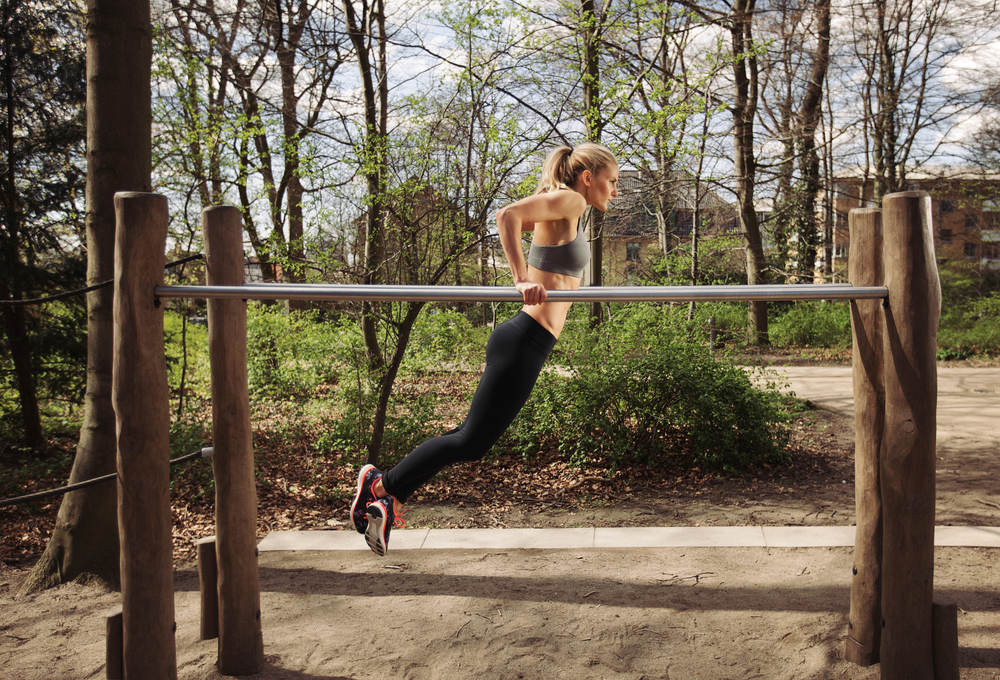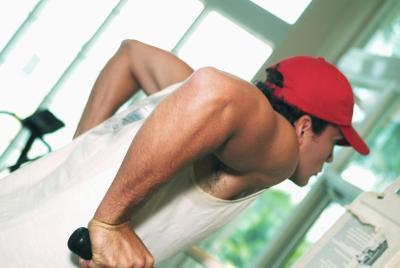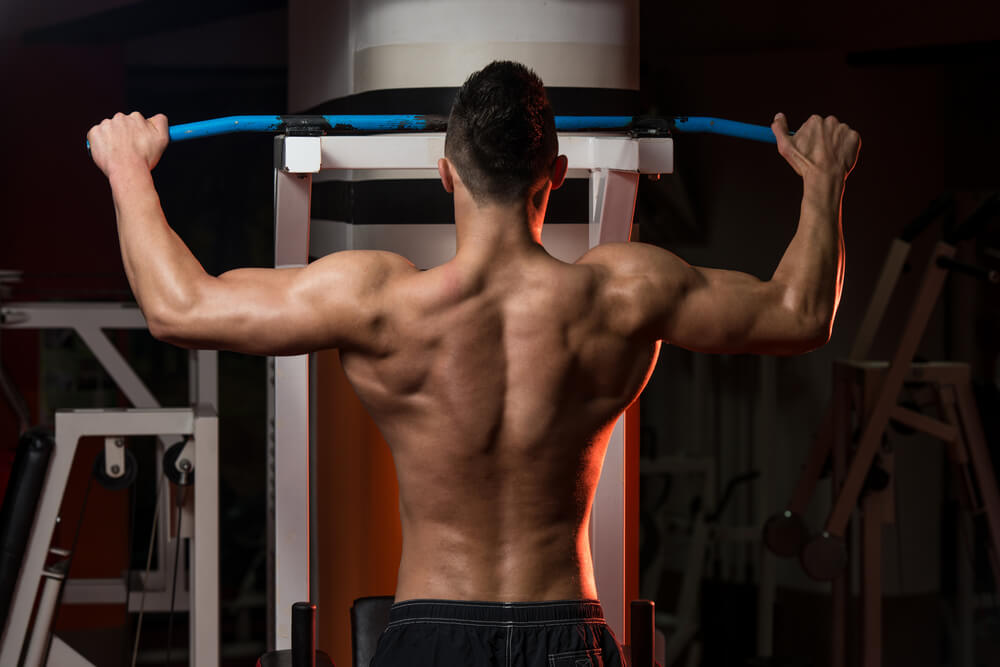Dips are one of the most effective and versatile upper body exercises that engage multiple muscle groups simultaneously. They’re a staple in calisthenic training, and you’ll find them included in a variety of workout regimes—from beginner level to advanced. Despite their seemingly straightforward execution, dips offer different variations and progressions that can challenge even the most seasoned athletes. This article explores the anatomy of the dip, its benefits, and variations, and how to incorporate them into your workout routine for optimal results.

What Muscles Do Dips Work?
When performing dips, a variety of upper-body muscle groups are called into action. Understanding the anatomy behind the exercise can provide insight into how to perform dips most effectively for targeted muscle development.
Triceps Brachii
The triceps brachii, often simply called the triceps, is the muscle on the back of the upper arm. It is primarily responsible for extending the elbow, and it’s the primary mover in a dip. As you lower yourself down and then push back up, you’re forcing your triceps to work against gravity to extend your elbows, thereby strengthening this muscle.
Pectoralis Major
The pectoralis major is the large, fan-shaped muscle that makes up the bulk of your chest. Depending on how you perform your dips—specifically, the angle of your torso—you can engage the pectoral muscles to a significant degree. Leaning forward while doing the dip can help shift some of the emphasis away from the triceps and onto the pectorals.
Deltoids
The deltoids, or delts for short, are the rounded, triangular muscles covering the joint at the top of the shoulder. Although they aren’t the primary movers in a dip, the anterior (front) deltoids do contribute, particularly as you press up to the starting position.
Serratus Anterior
The serratus anterior muscles are situated on each side of your chest, stretching from the upper ribs to the shoulder blade. They are sometimes referred to as the “boxer’s muscle” because they’re heavily involved in the motion of throwing a punch. In the context of dips, these muscles help stabilize the shoulder blades against the ribcage.

Different Types of Dips
There are several types of dips, each with its own set of benefits and challenges. While the muscle groups involved are similar across different types of dips, the level of activation can vary based on the equipment used and the technique applied.
Parallel Bar Dips
These are the most common type of dip and are usually performed on a dip station with two parallel bars. This type focuses on the triceps but also engages the pectoral muscles and front deltoids. The bars are usually set shoulder-width apart, which helps to maintain a neutral grip and minimizes the strain on the shoulders.
Ring Dips
Performed using gymnastic rings, ring dips require more stabilization and coordination compared to parallel bar dips. The instability of the rings challenges not only the major muscle groups but also engages stabilizing muscles to a greater degree, making it a more advanced and comprehensive exercise.
Bench Dips
In this variation, you place your hands on a bench, chair, or similar surface behind you while extending your legs out in front. This version primarily targets the triceps and is generally easier than parallel bar or ring dips. However, it’s important to be cautious with form as it can put significant stress on the anterior shoulder if performed incorrectly.
Straight Bar Dips
This variation is performed on a single, straight bar, often the same type of bar used for pull-ups. By gripping the bar with both hands, you engage your core for stabilization and work your muscles from a different angle, offering a unique challenge compared to the parallel bars.
In summary, the muscles targeted and the types of dips you choose can vary depending on your fitness goals, equipment available, and skill level. However, whatever variation you select, dips are an effective exercise for building upper body strength and muscle definition.
Dips are often celebrated for their prowess in building upper body strength, but their benefits extend far beyond merely chiseling out a defined chest or toning triceps. This versatile exercise brings a variety of physical and functional advantages to your fitness routine, some of which you may not have considered before. Let’s delve deeper into the comprehensive benefits of incorporating dips into your workouts.

Benefits of Dips: More Than Just an Upper-Body Exercise
Strength Building in Multiple Muscle Groups
Dips are a compound exercise, meaning they work multiple muscle groups simultaneously. With a focus on the triceps, pectorals, and anterior deltoids, dips provide an effective way to build upper body strength. But it’s not just about these major muscles; stabilizing muscles around the shoulders and even the upper back are also engaged, offering a more comprehensive workout.
Functional Fitness and Athletic Performance
Functional fitness refers to exercises that prepare your body for real-life activities and situations, from lifting heavy boxes to swinging a baseball bat. The natural and coordinated movements involved in dips have direct applications in various sports and everyday activities. They can improve your performance in anything that requires pushing, pulling, or lifting—essential for athletes and beneficial for everyone else too.
Improved Mobility and Flexibility
Going through a full range of motion during dips can improve your shoulder and elbow flexibility. This is not only good for muscle and joint health but also beneficial for other workouts and physical activities. Better mobility can enhance your performance in other exercises and reduce the risk of injuries.
Enhanced Core Stability
Though not often thought of as a core exercise, dips do require a significant amount of core stabilization. Keeping your body upright and preventing your hips and legs from swaying are tasks delegated to your core muscles. This can have the dual benefit of not only strengthening your core but also improving your posture.
Cardiovascular Benefits
While they are primarily a strength training exercise, dips performed at a higher volume and pace can offer cardiovascular benefits. Doing them as part of a circuit training routine or as a superset with other exercises can elevate your heart rate, aiding in better cardiovascular health and increased fat loss.
Scalability and Progression
Dips are highly scalable, making them suitable for people of various fitness levels. Beginners can start with assisted versions, like bench dips or machine-assisted dips, and gradually progress to more challenging variations. Advanced athletes can add weight or incorporate complex movements to continue making gains, making dips a long-term asset in any fitness journey.
Psychological Rewards
Completing a challenging set of dips can offer a strong sense of accomplishment, boosting your confidence and mental toughness. This can have a ripple effect on your overall well-being, encouraging you to tackle other challenges, both in and out of the gym.
Cost-Effective and Convenient
Dips require minimal equipment and can even be done using sturdy furniture at home. This makes them not only convenient but also cost-effective, removing barriers to entry that can exist with other exercises requiring expensive or specialized equipment.
Common Mistakes to Avoid While Doing Dips
- Elbow Flare: Keep your elbows tucked in to target the triceps effectively and to avoid unnecessary shoulder strain.
- Incomplete Range of Motion: For full muscle activation, go as deep as your flexibility allows and extend fully at the top.
- Fast Reps: Focus on a controlled movement to maximize muscle tension.
Variations and Progressions
- Weighted Dips: Add a weight belt or hold a dumbbell between your legs.
- Isometric Holds: Pause and hold the dip at different phases of the movement.
- Explosive Dips: Push up from the bottom position explosively, getting air under your hands at the top.
- Archer Dips: A one-arm focused dip for added intensity.

How to Incorporate Dips Into Your Routine
Dips are a versatile and effective exercise that can yield a variety of benefits, from building upper body strength to enhancing functional fitness.
But how do you go about integrating this powerhouse of movement into your existing workout routine?
Below, we outline a comprehensive guide for adding dips to your regimen, regardless of your current fitness level.
Dips For Beginners
Understanding Your Limits
If you’re an absolute beginner, start by assessing your upper body strength. You might find that you can’t do a full dip right away, and that’s perfectly okay.
Modifications and Assisted Dips
- Bench Dips: Begin with bench dips to get used to the motion. Place your hands on a bench or a sturdy surface behind you, extend your legs out in front, and lower your body by bending your elbows. This will help you work your triceps and get used to the dip motion.
- Machine-Assisted Dips: Many gyms have an assisted pull-up and dip machine. Start here to get the feel of the movement while the machine takes on some of your body weight.
Programming for Beginners
- Frequency: 2–3 times per week
- Sets and Reps: 2–3 sets of 5–8 reps of either bench dips or assisted dips
- Rest: 90–120 seconds between sets
Dips For Intermediate Levels
Progressing from Beginner Level
By now, you should be able to do a few standard parallel bar dips. Now it’s time to challenge yourself further.
Advanced Modifications
- Weighted Dips: Once you can perform 10–12 bodyweight dips easily, consider adding extra weight. You can use a weighted belt or hold a dumbbell between your ankles.
- Ring Dips: For added difficulty and muscle engagement, try transitioning to ring dips.
Programming for Intermediate Levels
- Frequency: 3–4 times per week
- Sets and Reps: 3–4 sets of 8–12 reps, depending on your comfort level and the variation you choose
- Rest: 60–90 seconds between sets
Dips For Advanced Levels
Taking It Up a Notch
If you’re an advanced athlete, you likely have specific fitness goals in mind. Dips can be tailored to target strength, endurance, or muscle hypertrophy.
Dips Advanced Variations
- Explosive Dips: At the top of the dip, push up as explosively as you can. This trains fast-twitch muscle fibers and improves power.
- Tempo Dips: Slow down the eccentric (lowering) phase of the dip for an increased time under tension, beneficial for muscle hypertrophy.
- Archer Dips: This is a one-arm focused dip that provides an intense workout for the targeted arm while engaging stabilizing muscles.
Programming Dips for Advanced Levels
- Frequency: 3–5 times per week
- Sets and Reps: 4–5 sets of 10–20 reps or more, depending on your goals and the difficulty of the dip variation you’re performing
- Rest: 60–90 seconds between sets for hypertrophy, and up to 3 minutes for maximum strength training

Complementary Exercises For Dips
To create a balanced workout, consider pairing dips with pulling exercises like pull-ups or rows. This ensures balanced muscle development and reduces the risk of imbalances that could lead to injury.
Conclusion
Dips are not just another exercise to add to your list; they’re a powerful, multi-joint, upper-body movement that can be adapted to meet various fitness goals. Whether you’re looking to build strength, gain muscle, or enhance functional fitness, dips can be a beneficial addition to your workout regimen. Like any exercise, proper technique and progressive overload are key to reaping maximum benefits, so start dipping your way to a stronger upper body today!
-Terry Asher
Terry Asher
Latest posts by Terry Asher (see all)
- Better Family – Product Review Liquid Daily 2 oz - Dec 16, 2024
- Post-Workout Recovery: The Key to Optimal Performance - Nov 25, 2024
- Pre-Workout Supplements – Everything You Need To Know - Nov 18, 2024









[…] Source link […]
[…] Source link […]
[…] muscle teams, not solely necessary for aesthetics but additionally for supporting a variety of higher physique actions. To successfully practice and develop the chest, it’s important to know its anatomy […]